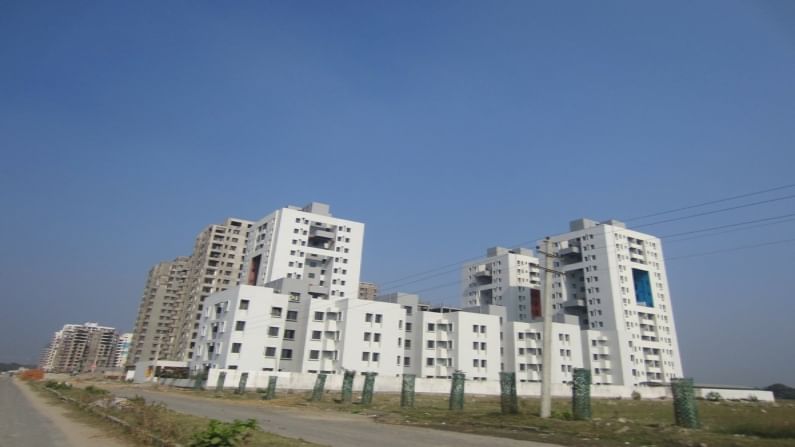It's time to buy real estate in West Bengal, here's why
The Mamata Banerjee-led government reduced both stamp duty and circle rates and would be in force till October 31 this year

Last August when the ground under the feet of the real estate industry was shaking due to Covid-19, the Maharashtra government decided to slash stamp duty on registration of property from 5% to 2%. Sales had gone up.
On Wednesday, the West Bengal government went a step ahead to boost the sentiment among real estate buyers. The government reduced stamp duty by 2 per centage points and decreased the circle rate by as much as 10%.
It would benefit anyone seeking to buy/take on lease a piece of land, house or a flat.
Circle rate
Circle rate is the minimum valuation at which any piece of real estate is registered when it changes hands. In simple words, it is the minimum value at which a property is sold/purchased. The stamp duty depends on the circle rate.
If both are reduced, the price that the buyer has to pay comes down considerably.
The current rate of stamp duty is 6% for urban areas and 5% in rural areas.
According to the announcement made during the state budget on Wednesday, the new rates will be 4% in cities and 3% in villages. If the value of the property is more than Rs 1 crore, it attracts an additional 1 percentage point of stamp duty.
The reduced rates will be applicable till October 31, 2021.
If the circle rate of an area is Rs 100/unit area and the stamp duty is 6%, the buyer has to pay Rs 100 + Rs 6 = Rs 106 on these two heads.
After the announcement, the circle rate would push down the price of the unit area to Rs 90. The stamp duty would be 4% of Rs 90 = Rs 3.60.
Therefore, the buyer has to pay Rs 90 + Rs 3.6 = 93.60 for the same area.
The assumption in the calculation is that the seller would agree to sell at the circle rate fixed by the government. But even if the seller does not want to sell at that rate, a 10% decline in circle rates would put a downward pressure on the prices of real estate.
Developers welcome move
Ketan Sengupta, CEO of Bengal Peerless Housing Development Company, felt that those who were fence-sitting will now rush to complete the process.
“Reduction in stamp duty of 2% will result in larger number of registrations happening during this period. Those who delaying registration of their properties would rush for registration now to avail the limited period discount. The 10% reduction in circle rate is also a move in the right direction as more realistic prices will reduce income tax burdens arising due to provisions under sec 43C(A) of the Income Tax Act,” he said.
“This announcement of the state government would encourage the real estate sector to launch new projects and infuse fresh investments,” Sushil Mohta, president, Credai, West Bengal told the media.
Post-Covid trends
One of the trends of the real estate sector post-Covid is that there are more enquiries and increased sales in the bigger flat – dwelling units with 3 and 4 bedrooms – segment due to work from home and schooling from home requirements.
The housing sector is one of the engines of the economy that partially impacts other sectors as well such as iron and steel, cement, paints, electricals and consumer goods.
Pan-India inventory
Two reports – the Financial Stability report by Reserve Bank of India and another by property consultant Anarock Property Consultants – indicated that though sales in April-June quarter on FY22 suffered as compared to January-March quarter of FY21, unsold inventory, the real headache of the real estate sector has come down compared to what it was in the pre-pandemic levels.
RBI has stated that unsold inventory in the country declined from about 8.5 lakh units in Q1 of 2019-20 to about 7 lakh – a reduction of 18.75% — in Q4 of FY21.
According to Anarock, the top seven cities of the country accounted for 24,570 new units launches in the April-June quarter. This is a sharp decline from the sale numbers in January-March quarter of this year.
Home loan advantage
Though sales in the housing sector are expected to rise, especially with low interest rates of home loans – at least 10 of the leading banks and housing finance companies are offering rates well below the 7% mark – the rise in commodity prices can push the price of real estate projects, nullifying the financial cost gains.
RBI mentioned in its Financial Stability Report that the All-India House Price Index (HPI) increased (y-o-y) by 2.7% in Q4 of 2020-21 vis-a-vis 3.9% growth a year ago.
Care Ratings, too, flagged the rise in commodity prices resulting in an upward pressure in the price of dwelling units.
“Cost of construction has gone up as the prices of steel, cement, copper, aluminum products and sanitary wares have been increasing. This will tend to put pressure on the cost of the project which can pressurise prices,” it said in a report.

